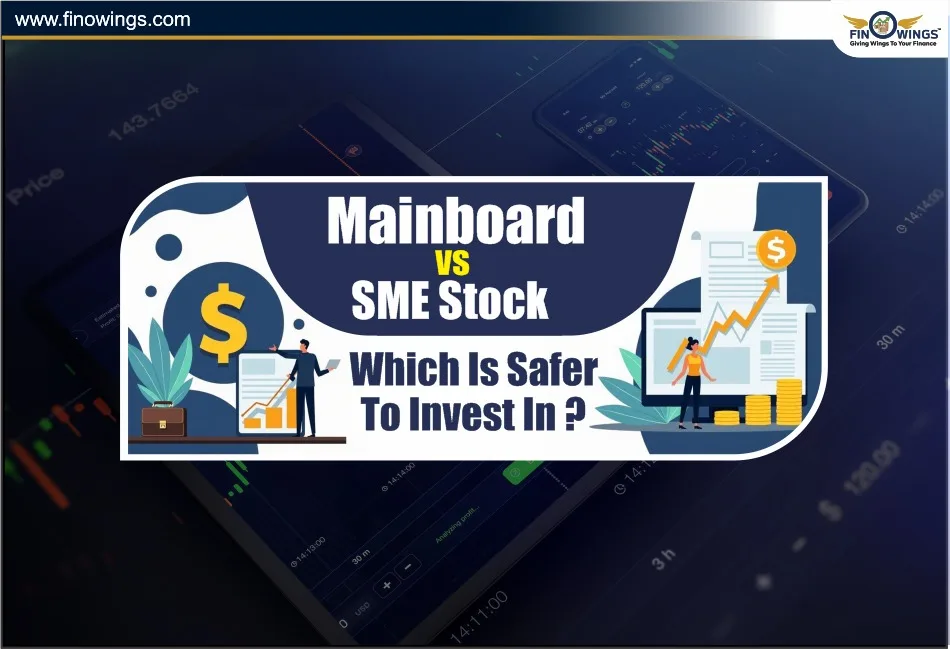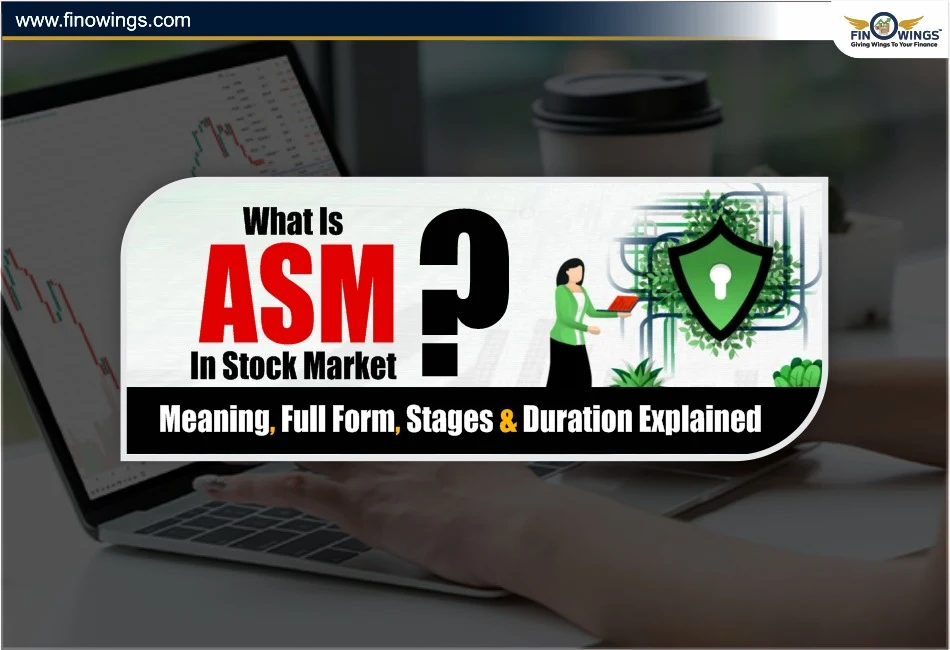Home >> Blog >> Mainboard vs SME Stock: Which Is the Safer Investment?
Mainboard vs SME Stock: Which Is the Safer Investment?

Table of Contents
- Mainboard vs SME: Which is actually safer to invest in?
- What Are Mainboard Stocks?
- Benefits of Mainboard Stocks
- What Are SME Stocks?
- Mainboard vs SME: Key Differences
- Is Investing in Mainboard vs SME Safe?
- Why Investing In Mainboard Stocks is Beneficial
- Mainboard vs SME: Which one Has Better Returns?
- Who Should Invest in Mainboard Stocks?
- Who Should Invest in SME Stocks?
- Mainboard vs SME for IPO Investing
- Risk in SME Stocks: What You Have to Consider
- Conclusion
Due to the increase in Mainboard stocks and SME stocks (Small and Medium Enterprise stocks), while more investors are participating in the Indian Stock market, it is also stimulating the rise of investors. Recently, the listing of SME IPOs has resulted in enormous gains, which has drawn the attention of first-time investors. However, significant gains imply significantly higher risk, therefore, we must ask ourselves:
Mainboard vs SME: Which is actually safer to invest in?
We assess risk and return, explain both segments, and analyse which is more aligned with the needs of entry-level investors, long-term investors, and high-risk investors.
What Are Mainboard Stocks?
Mainboard stocks are stocks of companies listed on the NSE and BSE principal exchanges. These companies are usually:
-
Big or mid-sized companies.
-
Years of solid financial record.
-
Wider participation in the market.
-
High liquidity.
-
High adherence to regulatory standards.
-
Some companies include Reliance, Infosys, TCS, and HDFC Bank, which are all very well known.
Benefits of Mainboard Stocks
Mainboard companies exhibit:
-
Performance is consistent and stable, usually in the long run.
-
Strong corporate governance.
-
Corporate actions that are open to the public.
-
Coverage by analysts is broader; fewer actions are required to remain under the radar.
-
Lesser fluctuations.
Because of all these mainboard investment advantages, they are ideally positioned to be a safe long-term investment.
What Are SME Stocks?
These are Small and Medium Enterprises shares listed on dedicated exchanges such as:-
NSE Emerge.
BSE SME.
These are developing companies that are in the earlier stages of business or an industry and tend to have:
-
Lower market capitalisation.
-
Limited operational history.
-
Low liquidity within the share market.
-
Low to high risk potential and high potential upside.
There is a rapidly developing potential for these companies which attracts investors to SME shares as well as the high ratings of the IPOs.
Mainboard vs SME: Key Differences
Here’s a clear comparison to understand Mainboard vs SME:-
|
Feature |
Mainboard Stocks |
SME Stocks |
|
Company Size |
Large & mid-cap |
Small / emerging |
|
Regulation |
Very strict |
Less strict than the mainboard |
|
Liquidity |
High |
Low |
|
Volatility |
Lower |
Very high |
|
Risk Level |
Moderate |
High |
|
Returns Potential |
Stable, long-term |
High but uncertain |
|
Investor Type |
Beginners & long-term |
High-risk, high-reward investors |
This explains why many traders chase SME stocks for quick gains, while conservative investors prefer mainboard companies.
Is Investing in Mainboard vs SME Safe?
Let’s compare safety between the two categories.
SME Stock Safety
SME stocks do offer attractive returns - especially during bull markets - but the risk in SME stocks is significantly higher.
1. Low Liquidity
Buying is easy, but selling is often difficult. A ₹30–50 drop can happen in minutes.
2. Short Financial Track Record
SMEs have little experience and/or do not have years' worth of audited finances which gives rise to risk and uncertainty.
3. Risk of Price Manipulation
The low number of shares makes them easy to manipulate at highs and lows.
4. Less Coverage and Information
The limited number of analysts means the data is not fully validated.
5. More Risky to Operate
Small businesses struggle with growth, access to funding, and meeting rules and regulations. Hence, SME stock safety becomes a top concern when it comes to beginners in the field.
Why Investing In Mainboard Stocks is Beneficial
Mainboard stocks have more perks because they are seen as more protective.
1. Solid Business Fundamentals - The businesses have established frameworks and multiple income-generating channels.
2. Good Liquidity - Free to buy and sell shares at will without altering the market price.
3. More Stringent Corporate Governance - Disclosures are done more regularly and are more open to the public.
4. More Inclusive in the Market - Funds, FII, DIIs, analysts, institutions, all of them invest and keep tabs on the market.
5. Less Volatile - The stocks have a more consistent performance and are more stable in the long term. For these reasons, it is more preferred by beginners or long-term investors.
Mainboard vs SME: Which one Has Better Returns?
Each market contributes great value, albeit in varying fashions.
Mainboard Stocks
-
Best for long-term passive investments.
-
Consistent growth at a controllable rate.
-
Low-risk, predictable growth.
SME Stocks
-
Opportunity for exponential growth.
-
Profitable, but must be strategically timed.
-
It can be very volatile.
Steady risk vs high risk? The former will most likely prefer a long-term SME investment, but they must be prepared for the volatility that comes with it.
Who Should Invest in Mainboard Stocks?
Choose Mainboard stocks if you:
-
Want long-term, stable, predictable returns.
-
Prefer lower risk.
-
Seek diversification.
-
Make investments via SIP or themes with a long-term focus.
Mainboard investing complements most wealth-building activities.
Who Should Invest in SME Stocks?
Only those with:
-
A risk appetite.
-
The ability to manage volatility.
-
The capability to actively monitor a company.
-
The ability to manage considerable losses.
Investment in SME stocks is not a choice for newcomers or those with a conservative approach.
Mainboard vs SME for IPO Investing
This comparison is especially interesting for the IPO market.
Mainboard IPOs
-
Lower listing gains, but you’ll find stability.
-
Decent listing gains post that match your fundamental investing performance.
-
Overall, there’s a lower risk when investing.
SME IPOs
-
Listing gains are usually huge, but at times can be 100% to 300% (especially if you hit it in the right market).
-
You have to be careful; there are huge losses in weak market conditions.
-
This is very high risk.
So if your priority is safety, you’ll be able to find it in Mainboard IPOs. But if you are looking for a high-risk potential reward, you’ll find it in SME IPOs.
Risk in SME Stocks: What You Have to Consider
Consider the following when investing in SMEs:
- Are the company’s audited financials actually reliable?
- How profitably can the company scale?
- Is there a sufficient level of liquidity?
- Are the promoters of the company credible?
- Is the valuation of the company justified?
If you ignore these questions, you can find yourself in a tough scenario.
Conclusion
Looking at Mainboard vs SME and trying to determine which is safer, the answer is Mainboard Stocks give better governance, lower volatility, stronger fundamentals, and higher liquidity. Now, in this scenario, you’ll find SME Stocks can provide higher short-term gain,s but it comes at a cost of much higher risk.
For beginners and long-term investors, it’s better to invest in Mainboard stocks. For the highly experienced, high-risk investors, SME stocks can be selected, but only after a deep level of research is put in. Regardless of which segment you decide to go into, you'd better make sure that you are prepared for diversification and risk management, which will be necessary.
DISCLAIMER: This blog is NOT any buy or sell recommendation. No investment or trading advice is given. The content is purely for educational and information purposes only. Always consult your eligible financial advisor for investment-related decisions.
Author
Frequently Asked Questions
Mainboard stocks are listed on major exchanges like BSE and NSE and belong to large, established companies. SME stocks are listed on dedicated SME platforms for small and medium enterprises, with lower liquidity and higher volatility.
Mainboard stocks are generally safer due to strong fundamentals, better regulatory oversight, and higher liquidity. SME stocks carry higher risk but may offer higher growth potential for investors with higher risk tolerance.
Yes. SME stocks can provide higher returns because small and medium companies have strong growth potential. However, they are more volatile and susceptible to market fluctuations and operational risks.
Risks include low liquidity, higher price volatility, limited transparency, and regulatory or operational challenges. Investors should conduct thorough research before investing in SME stocks.
Beginners should prioritize mainboard stocks for stability and lower risk. SME stocks can be considered as a small, diversified portion of a portfolio after careful research and risk assessment.



















